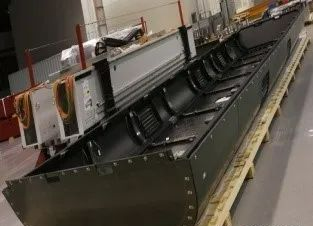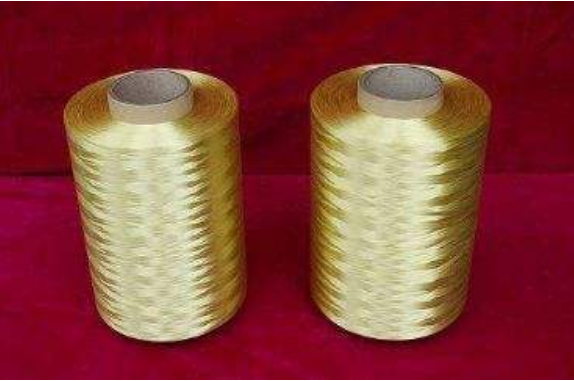Fiber composite materials have become an indispensable key material in the field of rail transportation
Fiber composite materials have become an indispensable key material in the field of rail transportation
Fiber composite materials are composite materials formed by reinforcing fiber materials, such as glass fiber, carbon fiber, aramid fiber, etc., and matrix materials through winding, molding, pultrusion and other molding processes. Fiber composite material technology has developed rapidly in recent years and is widely used in various fields due to its excellent performance, such as infrastructure construction, transportation, aerospace and other fields.
In recent years, with the rapid development of my country’s rail transit industry, more and more research has been done on new materials for rail vehicles, and the proportion of new materials used in rail vehicles is also increasing. Among them, the research and application of fiber composite materials are prominent. This is because fiber composite materials can obtain new materials with different comprehensive properties according to design requirements, through the selection of different matrix and reinforcement materials, the deployment of different proportions, and the use of different molding processes, such as good heat insulation and corrosion resistance. , wear resistance, high specific modulus, high specific strength and other properties, which cannot be satisfied by traditional single materials.

In the design of rail vehicles, composite materials have been widely used in vehicle interiors, internal equipment and other parts, and have also been used to a certain extent in structural parts subject to load. Structural parts made of composite materials have the advantages of high strength, light weight, and high rigidity. Their manufacturing process usually uses near-net-shape molding technology, which does not require deep processing and can significantly reduce manufacturing costs. The application of composite materials in rail vehicles can also effectively improve the comfort and safety of the vehicle, reduce vibration and noise, and reduce the weight of the vehicle body. Fiber composite materials have become an indispensable key material in the field of rail transportation.
1
Introduction to the characteristics of fiber composite materials
The specific modulus and specific strength of carbon fiber composite materials are the highest among currently commonly used materials, and they have obvious advantages in strength, stiffness and smoke toxicity. The new fiberglass material has good flame retardant and sound insulation properties. Aramid composite materials have properties such as flame retardancy, high strength, high temperature resistance, high insulation level, moisture resistance and corrosion resistance, and stable physical and chemical properties. Various types of composite materials have different characteristics and are used in different key parts of rail vehicles.
2
Analysis of the application advantages of composite materials in rail vehicles

2.1 Good mechanical properties
Composite materials embody the comprehensive properties of both matrix materials and reinforcement materials. They have excellent properties such as high strength, light weight, high rigidity, vibration and noise reduction, fatigue resistance, and heat insulation. They are suitable for lightweight design of vehicles and improving vehicle durability. Safety and comfort are important. As can be seen from Table 1, the specific strength and specific modulus of composite materials are significantly higher than those of traditional single materials.
2.2 Comply with the requirements for lightweight development of rail vehicles
In recent years, the operating speed of rail transit vehicles has become higher and higher, which requires rail vehicles to achieve lightweight design without reducing safety performance. The use of composite materials for rail vehicles is an effective solution.
2.3 Can reduce costs
With the increase in rail transit operation speed, people are paying more and more attention to maintenance costs and operating costs while paying attention to vehicle safety and comfort. Although the initial investment in the rail transit industry is relatively large, the overall cost of vehicles using composite materials is significantly higher than the cost of vehicles made of ordinary materials. In particular, huge investments are bound to be made in the research and development of new materials and new processes. However, the rail transit operation cycle is long. From the perspective of the vehicle’s full life cycle, lightweight vehicles can effectively reduce vehicle operating energy consumption and reduce operating costs; on the other hand, the vibration resistance, fatigue resistance, and corrosion resistance of composite materials Performance, damage tolerance, and collision energy absorption are all better than ordinary metal materials, so the vehicle maintenance cycle can be extended and its maintenance costs can be greatly reduced. Therefore, from the perspective of long-term benefits, composite materials can effectively reduce the life cycle cost of vehicles.
The excellent application advantages of composite materials are in line with the concepts of high comfort, high safety, energy conservation and environmental protection in the rail transit industry. Therefore, it is urgent to study the application of composite materials in vehicle body structures, which will play an important role in further improving product quality and market competitiveness.
2.4 Strong designability
High specific modulus and high specific strength are the most prominent features of fiber composite materials, and these mechanical properties can vary within a wide range. Therefore, through measures such as selecting the composite matrix and reinforcement and changing the molding process of the material, various requirements can be met. design needs. For example, the tensile strength of glass fiber can reach 3500MPa and the elastic modulus is 70GPa. The tensile strength of high-modulus carbon fiber can reach 3900MPa and the elastic modulus is 600GPa. And it has been known through experiments that by changing the matrix material properties of composite materials with widely different properties, during the molding process of structural parts, theThe design requires finding the best ply structure.
2.5 Good reliability and security
The key factors affecting the safety of structural parts are the fatigue resistance and notch sensitivity of the material. Prior to this, composite materials were widely used in high-stress fields such as aerospace and aviation precisely because of their excellent fatigue resistance and low notch sensitivity.
Although ordinary metal materials have high static strength, their strength drops significantly under severe vibration conditions. For example, if a gap appears at a certain point in a metal material structure, the defects will spread quickly under vibration and impact (variable loads). until structural parts are damaged. However, the difference between the static strength and vibration resistance of composite materials is almost zero. Even if there is a gap in the structural member, the stress in the material will be transferred to the adjacent layers and will not be destroyed due to long-term variable loads. This is one of the reasons why the service life of composite parts is much longer than that of metal parts.

3
Application of fiber composite materials in rail vehicles
3.1 Carbon fiber composite materials
Although domestic research and application of carbon fiber materials started late, the technology has developed rapidly in recent years, especially in the field of vehicle transportation. For example, CRRC Qingdao Sifang Co., Ltd. uses carbon fiber materials in the design of the equipment cabin of an EMU. The impact resistance, corrosion resistance and mechanical properties of the vehicle are guaranteed, and the weight of the equipment cabin is reduced by about 35% compared with aluminum alloy materials. As shown below.
CRRC Changchun Rail Bus Co., Ltd. has developed the world’s first all-carbon fiber composite subway car body with completely independent intellectual property rights in the field of rail transit, and it was unveiled at the Berlin exhibition, as shown in the picture below.
Carbon fiber is widely used in rail vehicles, such as car body shells, hoods, urban rail vehicle driver’s cab hoods, air deflectors, driver’s stations, skirts, etc.
3.2 Glass fiber composite materials
It has excellent noise reduction and flame retardant properties, and its mechanical strength and stiffness ratio are more outstanding. Therefore, it is often used in seats, cab hoods and other parts of rail vehicles.
3.3 Aramid fiber composite materials
Compared with traditional metal materials, aramid composite materials have excellent properties such as flame retardancy, high strength, high insulation level, moisture resistance and corrosion resistance, and stable physical and chemical properties. They are fully used in motors, transformers, etc., and can achieve good insulation and weight reduction. effect.
4
Conclusion
The application of composite materials in rail vehicles will become more and more widespread, especially in car body structures, which have good application prospects. The development of composite materials in the field of rail transit is a long process. Scholars should pay attention to the following points during the research and development process:
(1) During the R&D and testing process, a large amount of data must be collected, analyzed based on theory, and verified repeatedly.
(2) When designing composite structural parts, the manufacturing process must be fully considered, and feasibility analysis and demonstration must be conducted to avoid unnecessary cost waste.
(3) The vehicle structure design should adopt an integral molding solution as much as possible to improve the vehicle’s load-bearing capacity.







